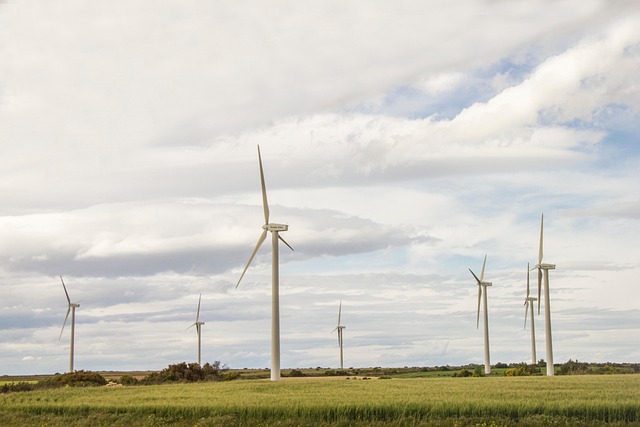Navigating the Green Frontier: Your Guide to Sustainable Investments
As climate change, resource depletion, and social equity issues continue to dominate the global agenda, sustainable investing emerges as a powerful approach for individuals and institutions alike. But what is sustainable investing, and how can you navigate this exciting yet complex landscape? In this guide, we will explore the fundamentals of sustainable investments, delve into their benefits, discuss different types of sustainable investments, and provide practical tips for getting started on your green investment journey.
Understanding Sustainable Investing
Sustainable investing refers to investment strategies that consider both financial returns and social/environmental impacts. It does not solely focus on generating profits but also aims to foster positive outcomes for society and the environment. This approach has gained momentum as conventional measures of success in investing are increasingly seen as insufficient in addressing global challenges.
Investors are recognizing that sustainability factors can significantly influence the long-term financial performance of companies and projects. By considering environmental, social, and governance (ESG) criteria, investors aim to reduce risk and capitalize on opportunities linked to the transition towards a more sustainable economy.
The Importance of Sustainable Investing
As we navigate the 21st century, several factors highlight the importance of sustainable investments:
Climate Change
Climate change poses a significant risk to economies, industries, and communities worldwide. It causes extreme weather, threatens food security, and drives population displacement. Sustainable investing can mobilize capital to support technologies and solutions that mitigate climate change, such as renewable energy, energy efficiency, and sustainable agriculture.
Resource Scarcity
The world’s population is projected to reach 9.7 billion by 2050, leading to increased demand for natural resources. Sustainable investments can help in the development and implementation of techniques that promote responsible resource usage, thereby ensuring that future generations also have access to vital resources.
Social Justice
Social inequality is a pressing issue in many regions, with significant disparities in access to essential services and economic opportunities. Sustainable investing considers social aspects like human rights, labor practices, and diversity, ensuring that investments promote equitable growth and empower marginalized communities.
Regulatory Trends
Governments and regulatory bodies around the world are increasingly adopting frameworks that emphasize sustainability. Initiatives such as the Paris Agreement aim to limit global warming and encourage countries to invest in sustainable practices. These regulatory trends shape investment landscapes, opening doors for innovative sustainable businesses.
Types of Sustainable Investments
Investors interested in sustainable investing have a wealth of options. Here are some common categories of sustainable investments:
ESG Funds
Exchange-Traded Funds (ETFs) and mutual funds that specifically target companies based on their ESG performance. These funds allow investors to gain exposure to a diversified portfolio aligned with their sustainability values.
Green Bonds
Bonds specifically issued to fund projects that have positive environmental benefits, such as renewable energy initiatives, energy efficiency upgrades, or sustainable waste management systems. Green bonds offer a fixed income investment with the added benefit of supporting environmental projects.
Social Impact Investing
Investments made with the intention to generate measurable social or environmental impact alongside a financial return. This can include investments in affordable housing, healthcare, education, and other areas that facilitate social progress.
Direct Investments in Sustainable Companies
Investing directly in companies with strong sustainability practices or innovative solutions. This typically requires more research but can be rewarding both financially and ethically.
Sustainable Real Estate
Investing in properties designed with sustainability in mind, focusing on energy-efficient buildings, low-carbon materials, and environmentally friendly practices. Sustainable real estate can provide returns while contributing to greener communities.
Getting Started with Sustainable Investing
Now that you understand the basics of sustainable investing, you may wonder how to embark on your own journey:
First, clarify your personal values and objectives. What issues matter most to you? Are you primarily focused on environmental concerns, social justice, or a combination of factors? Understanding your priorities will guide your investment decisions.
Next, educate yourself about the sustainable investment landscape. Read reports, attend webinars, and follow industry news to stay informed about trends, innovations, and challenges in sustainable investing.
Once you’re equipped with knowledge, consider partnering with a financial advisor who specializes in sustainable investing. They can help you navigate the various investment opportunities and strategies aligned with your goals and risk tolerance.
Finally, take actionable steps to invest. Begin by allocating a portion of your portfolio to sustainable investments. This could involve purchasing shares of ESG funds, committing to green bonds, or investing in sustainable businesses that resonate with your values.
Measuring Impact
One of the challenges within sustainable investing is measuring the impact of investments. Unlike traditional financial metrics, social and environmental impacts can be more complex to quantify. However, various frameworks and tools exist to assist in measuring and reporting impact, including:
Sustainability Reporting Standards
Organizations such as the Global Reporting Initiative (GRI) and the Sustainability Accounting Standards Board (SASB) provide guidelines for companies to report their sustainability performance transparently. This information aids investors in assessing the impacts of their investments.
Impact Metrics
Impact metrics may differ based on the type of investment. For example, in renewable energy, metrics like carbon emissions avoided or megawatts produced can serve as important indicators of success.
Third-Party Evaluations
Various organizations specialize in auditing and providing ratings for companies based on their sustainability practices. Seeking these ratings can help investors gauge a company’s performance concerning sustainability standards.
Challenges in Sustainable Investing
Although sustainable investing offers numerous benefits, it is not without its challenges:
Lack of Standardization
One key issue is the lack of universally accepted standards for what constitutes a sustainable investment. This creates confusion within the market and can lead to greenwashing, where companies exaggerate their commitment to sustainability.
Limited Options
While the market for sustainable investments is growing, options may still be limited compared to traditional investment avenues. This may restrict diversification and lead to higher risk levels for investors focused solely on sustainable assets.
Market Volatility
Like all investments, sustainable assets can be subject to market fluctuations. Investors must be prepared for potential short-term volatility, especially when investing in emerging sectors associated with sustainability.
The Future of Sustainable Investing
As awareness of climate change and social issues continues to grow, the future of sustainable investing appears promising. Trends suggest that a greater number of investors, including millennials and Gen Z, are prioritizing sustainable investments, which will likely accelerate capital flows into this area.
Moreover, innovations in financial technology (FinTech) are making it easier for investors to identify and invest in sustainable options. Crowdfunding platforms, robo-advisors specializing in ESG investments, and data analytics tools are transforming the way investors engage with sustainable assets.
Conclusion
In conclusion, navigating the green frontier of sustainable investments offers both challenges and opportunities. By understanding the principles of sustainable investing, exploring the various types, and measuring their impact, investors can take significant strides toward aligning their portfolios with their values while contributing to a healthier planet and a more equitable society.
As the investment landscape continues to evolve, the wind is shifting in favor of sustainability — it’s up to each of us to harness this momentum and play an active role in building a future that’s economically, socially, and environmentally sound.


